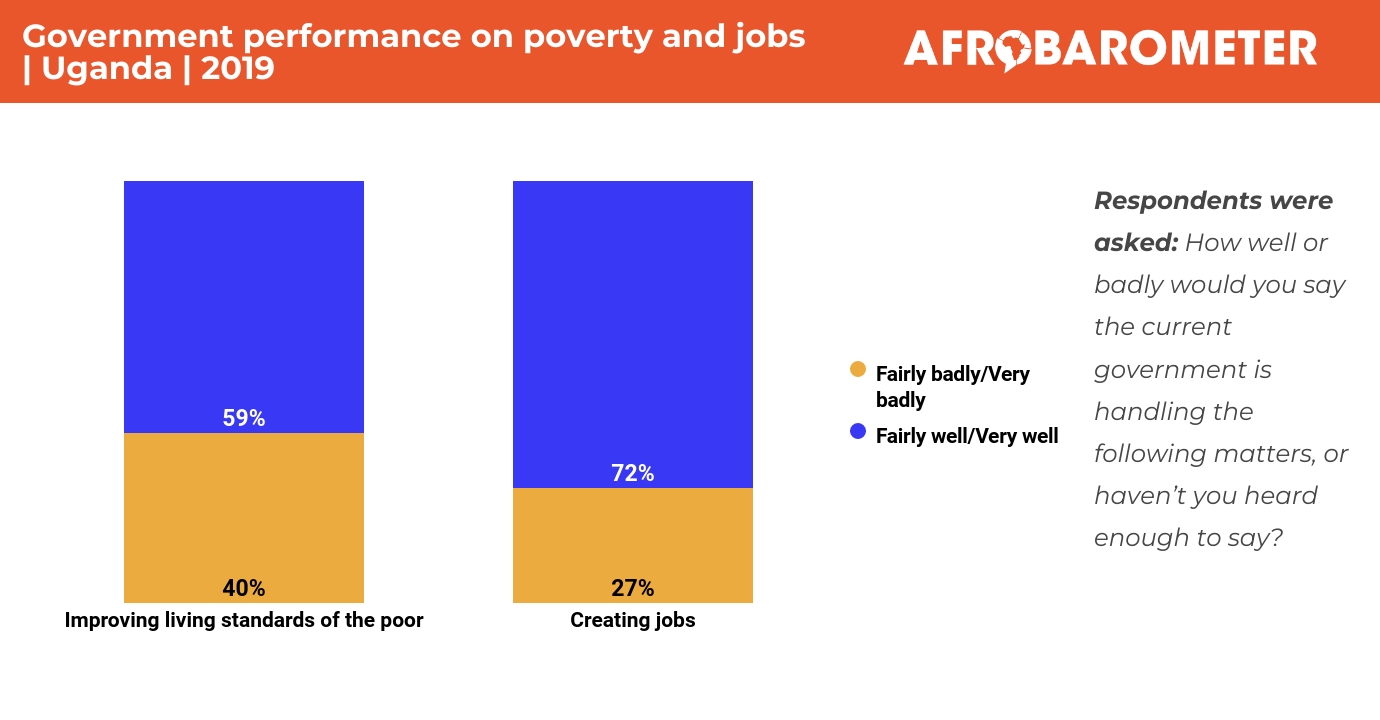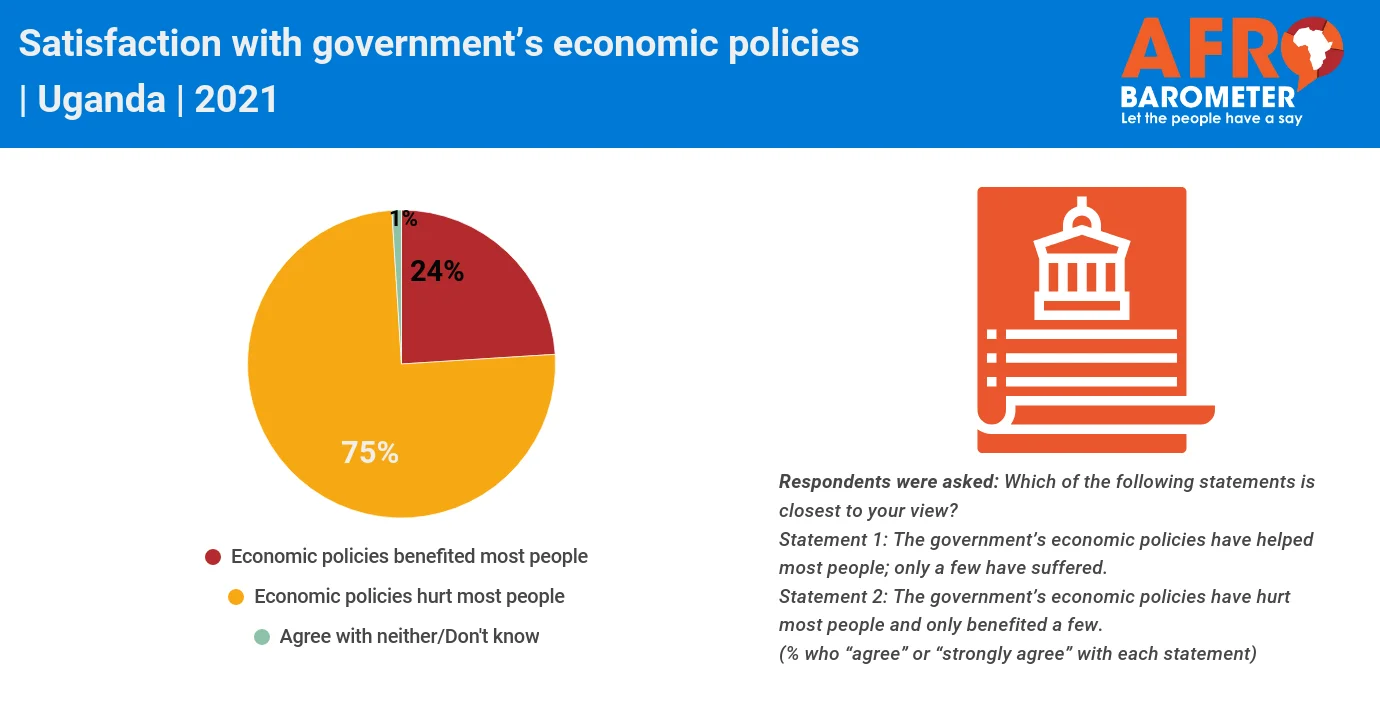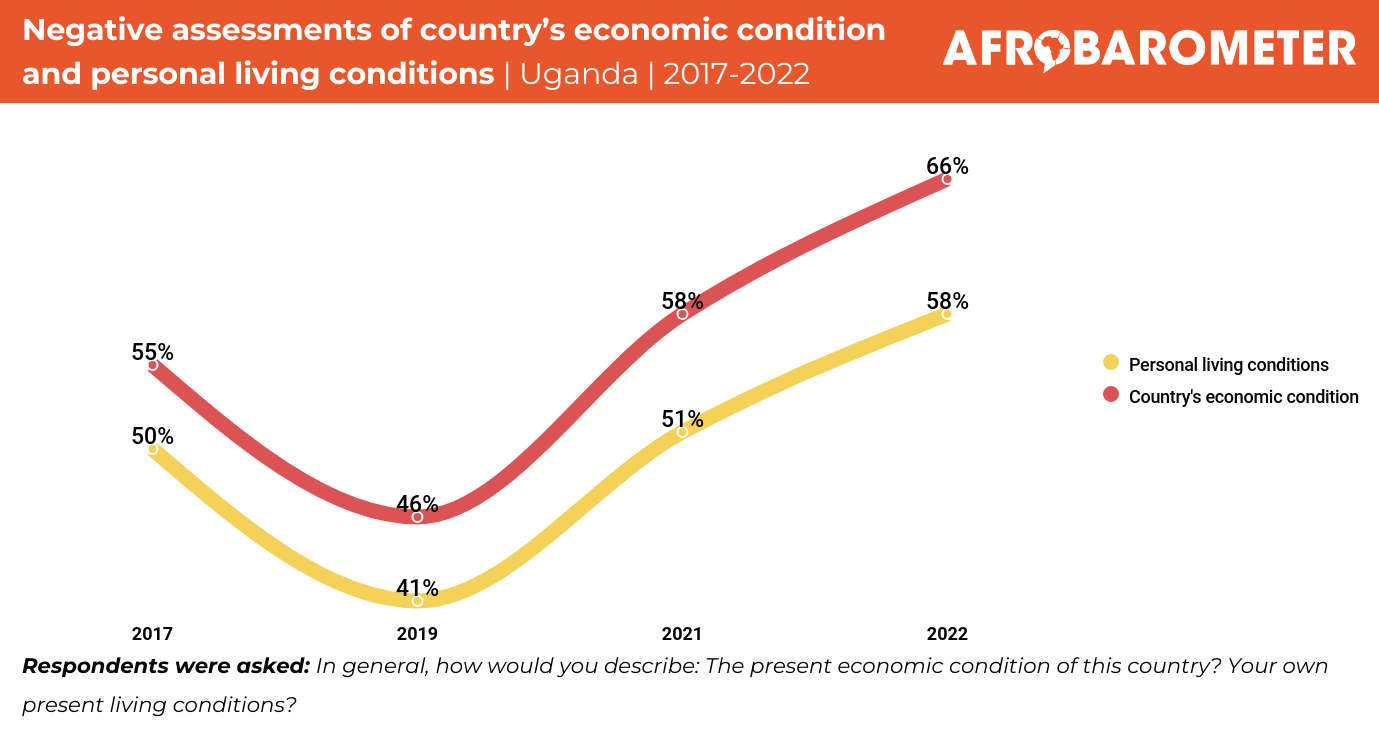- Nine in 10 Ugandans (89%) say they or a family member went without a cash income at least once during the year preceding the survey, including 42% who did so “many times” or “always.”
- Six in 10 citizens (62%) experienced moderate (43%) or high (19%) lived poverty during the past year, not substantially different from results in 2019 (64%) and 2017 (60%).
- Relatively small proportions of the population have benefited from key government anti-poverty initiatives such as the National Agricultural Cluster Development (NACD) programme (15%), the Social Assistance Grant for Empowerment (SAGE) for the elderly (12%), Operation Wealth Creation (OWC) (10%), Emyooga (9%), the Uganda Women Entrepreneurship Programme (UWEP) (6%), and the Youth Livelihood Programme (YLP) (6%). More than seven in 10 (72%) say their households have not benefited from any of these programmes.

Over the past three decades, Uganda’s national poverty rate has fallen by more than half, from 56% in 1992/1993 to 21.4% in 2019/2020, owing mostly to improved agricultural incomes among poor households and improved regional markets after the end of conflict in Northern Uganda (Uganda Bureau of Statistics, 2020; World Bank Group, 2016).
Yet Uganda remains one of the poorest countries in the world. In 2019/2020, 12.3 million people (30.1% of the population) lived below the poverty line of U.S. $1.77 per person per day (Uganda Bureau of Statistics, 2021).
The number of Ugandans who are not poor but vulnerable increased as well, as did the number of those who shift in and out of poverty. The proportions of people who are not poor but vulnerable to poverty increased by 10 percentage points, from 33% in 1992/1993 to 43% in 2016/2017 (World Bank Group, 2016). Between 2015 and 2019, 8.4% of households moved out of poverty, while 10.2% slipped into poverty (Uganda Bureau of Statistics, 2020). And the COVID-19 pandemic has exacerbated the problem, causing 300,000 more Ugandans to slide back into poverty (Uganda Bureau of Statistics, 2020, 2021; Independent News, 2021).
In an effort to address poverty, the government has initiated a variety of programmes. In the late 1980s, the Rural Farmers Scheme aimed to boost agricultural productivity and farmers’ livelihoods through credits, but most farmers were unable to benefit from the initiative, which ultimately failed.
In 1995, a similar credit finance scheme known as Entandikwa (“seed capital”) provided loans to the rural and urban poor, youth, disabled people, and women, but only about 40% of loans advanced to the target groups were recovered.
A slew of more recent poverty-alleviation initiatives has included Bonna Bagaggawale (“prosperity for all”), National Agricultural Advisory Services (NAADs), Plan for Modernization of Agriculture, Operation Wealth Creation, and Emyooga. These interventions, too, have yielded little or no success, and most have been abandoned.
Critics point to corruption as the main obstacle to success of these poverty-alleviation programmes (Independent News, 2021; Monitor News, 2021). Among other hurdles, they cite political patronage, mismanagement, poor planning, bureaucratic red tape, inflated administrative costs, nepotism, poor monitoring, and financial illiteracy among intended beneficiaries (Parliamentary Watch, 2021; NTV, 2021).
Recent Afrobarometer survey findings show that a majority of Ugandans continue to experience frequent shortages of basic necessities in their daily lives. Relatively small proportions report that someone in their household ever benefited from various government poverty-alleviation programmes, and a majority give the government poor marks on its efforts to improve living standards of the poor and create jobs.


